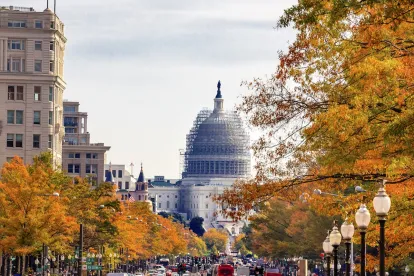The Court has now delivered its final two decisions of the term, one of them of great consequence to administrative law. With adjournment comes the retirement of Justice Stephen Breyer and the swearing-in of his successor, Judge Ketanji Brown Jackson, his former clerk, who is expected to be a dependable member of the Court’s liberal jurisprudential wing. All in all, a day of significance.
Given the Court’s doctrinal approach, it is no exaggeration to describe the 6-3 opinion in West Virginia v. Environmental Protection Agency (EPA) as a “major” case, where many Court observers and analysts had predicted that the conservative Justices would wield their majority to pare back, or even eliminate, the doctrine of “Chevron deference.” See Chevron, U.S.A. v. Natural Resources Defense Council, 467 U.S. 837 (1984), which describes the extent to which a court that is reviewing agency action should defer to an agency’s interpretation of a statute that it has been delegated to administer. Deference only becomes an issue if the statute does not reflect an unambiguously expressed intent on the part of Congress. However, if the statute is silent or ambiguous on the matter in question, the court can defer to the agency if its interpretation is “based on a permissible construction of the statute.”
Especially among conservatives, the doctrine has been controversial, and critics, including at least two members of the Court, have suggested that Chevron deference is contradicted by a different principle—the anti-delegation doctrine—that these critics would restore to prominence. However, West Virginia v. EPA is the third administrative law case in a row where the Court could have altered Chevron, but not only has it declined to do so, the majority opinions don’t even mention it. Indeed, in the West Virginia case, the only reference to Chevron can be found in Justice Kagan’s dissent, and it simply gets a passing glance that has nothing to do with its interpretive principle.
So, what has the Court’s majority done if it hasn’t dealt with Chevron or mentioned “anti-delegation” directly? Well, it has come close to the latter by invoking the so-called “major questions” doctrine. Under its terms, administrative agencies must be able to demonstrate “‘clear congressional authorization’” when they claim the power to make decisions of vast “‘economic and political significance.’” Like other requirements for clear statements of legislative intention, for example, concerning retroactivity, the major question doctrine is intended to protect foundational constitutional interests.
Let’s look at the West Virginia case itself to see what is “major” about it. Under the Clean Air Act, the EPA is authorized to regulate power plants by setting a “standard of performance” for certain pollution emissions. On a case-by-case basis, EPA is required to evaluate new or existing plants to reflect the “best system of emission reduction” that has been “adequately demonstrated, and then allow the facility to achieve the determined emissions cap “any way it chooses.” The matter at issue arose when, after a number of years, EPA turned its attention to carbon dioxide emissions, which had not before been listed as a toxic pollutant.
Before 2015, EPA always had addressed emission limits in terms of applying methods that would reduce pollution by requiring sources to operate more cleanly. However, that approach shifted to requiring sources to change their systems entirely by moving “from dirtier to cleaner sources” (think of things like wind, solar, and new facilities).
The Chief Justice, writing for all six Court conservatives, first opines that continuing injury to various states satisfies standing requirements and then notes that the Court is only deciding whether the “best system of emission reduction” identified by EPA in its challenged Clean Power Plan was within the authority granted to the agency in Section 111(d) of the Clean Air Act. Given the Court’s conclusion that the shift in question was of such significant proportions that it required invocation of the major questions doctrine, the answer is a clear “no.”
While, in the words of a concurrence by Justice Gorsuch, the majority has persuasively demonstrated “why Congress did not clearly authorize the EPA to engage in a ‘generation shifting approach’ to the production of energy in this country,” Justice Kagan, in dissent, argues the opposite, claiming that Congress could not have been clearer. In the end, though, the majority’s conclusion is that while under ordinary circumstances an agency’s reading of its statute might be upheld, that is not the case where an agency has exerted extravagant statutory power in a matter that greatly affects the national economy.
Biden v. Texas is the second case in the Court’s last act of the term. The case involves the Trump-era Migrant Protection Protocols—providing for the return to Mexico of non-Mexicans who had been detained attempting to enter the U.S. illegally from Mexico. The Biden administration first suspended and then attempted to terminate this program. However, that termination was blocked by the district court and Fifth Circuit on the grounds that the termination would violate the Immigration and Nationality Act and the Administrative Procedure Act. With the Chief Justice writing again, but this time for a majority that includes Justice Kavanaugh (the other conservatives joining a dissent by Justice Barrett), the Court reverses, holding both that the termination doesn’t violate the Immigration and Nationality Act and that the decision to terminate constituted final agency action.
Now, the day’s action shifts to the White House for the swearing-in of the new Justice, and this blog goes on summer hiatus.




 />i
/>i

